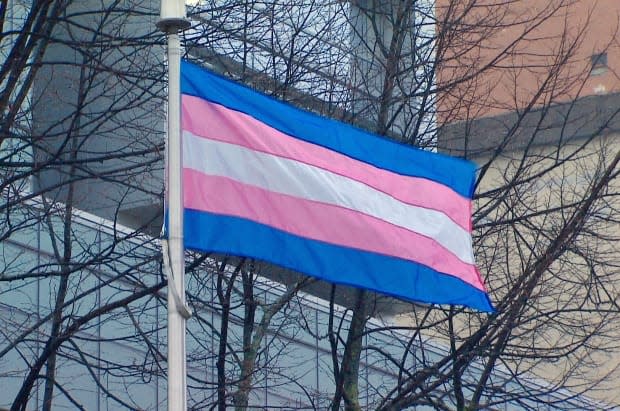Why this Halifax mom pulled her transgender son out of public school
Cyndi Sweeney doesn't blame the kid who hit her son.
She blames Nova Scotia's public school system, which she says doesn't properly educate children about gender identity.
Sweeney's son is transgender and started facing verbal bullying and harassment in Grade 6. Near the end of that year, Sweeney said he and another student got into an altercation that left her son with a bloody nose and concussion.
"I really feel like the school system is failing our children. They are not protecting them. We're testament to that," she told CBC's Mainstreet this week.
Sweeney said her son continued to face transphobic bullying for much of junior high and that's why she eventually decided to take him out of the public school system altogether.
This summer, during Pride Week, her family moved to a different part of Halifax so he could attend Grade 9 at a private school.
Sweeney doesn't want to use her son's name to protect his privacy.
He was assigned female at birth and began socially transitioning in Grade 5. For young transgender and non-binary kids, socially transitioning is about aligning their names, pronouns and appearance with their identity.

Sweeney said her son felt comfortable to open up about who he was in Grade 5 after his teacher read a book about a transgender child.
But things changed the following school year, she said.
"Then he started into Grade 6 and the school did nothing," Sweeney said. "There was no continuity whatsoever. There was not even communication … with the parents of kids in his class, which we had really asked for."
Other students began to say things like, "you're not a real boy or you're not a real girl and you're never going to be a real boy. You can't use that bathroom," she said.
Sweeney's son attended a school within the Halifax Regional Centre for Education, but she said she doesn't want to name the school in part to protect the identity of the student who bullied her son.
Through her consulting company, Simply Good Form, Sweeney holds diversity and inclusion workshops about gender identity for businesses and organizations.
She said Nova Scotia schools need to have a more comprehensive curriculum about transgender issues, one that's consistent across grades and begins as early as possible.
"We really need to break down the stigma and the school system is critically important," she said.
She works with teachers and said right now, while some are excited to explore these topics with students, others don't feel comfortable.
"They have certain components, certain boxes they have to tick and whether or not they want to talk about, you know, diving deep and reading a book, say, about transgender students, that is up to them," Sweeney said.
Education needed early on, says psychiatrist
Dr. Suzanne Zinck, a psychiatrist at the IWK Health Centre, said what Sweeney's family has experienced is sadly not unique.
"I also am struck by how dependent a lot of the education on gender is on what's provided to the teachers. The resources are there, but they are small and it's not something everyone is comfortable emphasizing when time is short," Zinck told CBC's Mainstreet.
"It's very, very important to have some education somewhere that gender is not equivalent to sex for all people."

She said as many as three per cent of people don't have the same gender that they're assigned at birth.
"I think there's really no inappropriate age," Zinck said. "There's a lot of emphasis in the debates online and in the media about how young is too young, and we're never really having that debate about someone identifying themselves as a cis-gender boy or a cis-gender girl."
Doug Hadley, a spokesperson for the Halifax Regional Centre for Education, said the province sets curriculum and directed questions to the Department of Education.
He also pointed to provincial guidelines, introduced in 2014, for schools to better support transgender and gender-nonconforming students.
Outcomes introduced in Grade 4
A spokesperson for Nova Scotia's Department of Education said all educators in the province "have access to curriculum resources that address the concept of gender and diverse expressions of gender."
"The skills and concepts related to kindness and fairness are introduced as soon as students enter school; outcomes related to gender identity are introduced in Grade 4 through Health Education," wrote Violet MacLeod.
She said since 2018, the province has worked with The Youth Project, a non-profit group that supports young people around issues of sexual orientation and gender identity.
Sweeney said things have gotten better for her son ever since he moved schools.
He's now thriving at his new school where education around gender identity begins in pre-primary, she said.
"He's definitely healing from what he went through over the past two years," she said. "As a parent, it's amazing. It's such a relief to see the change in him."
MORE TOP STORIES

 Yahoo Finance
Yahoo Finance 